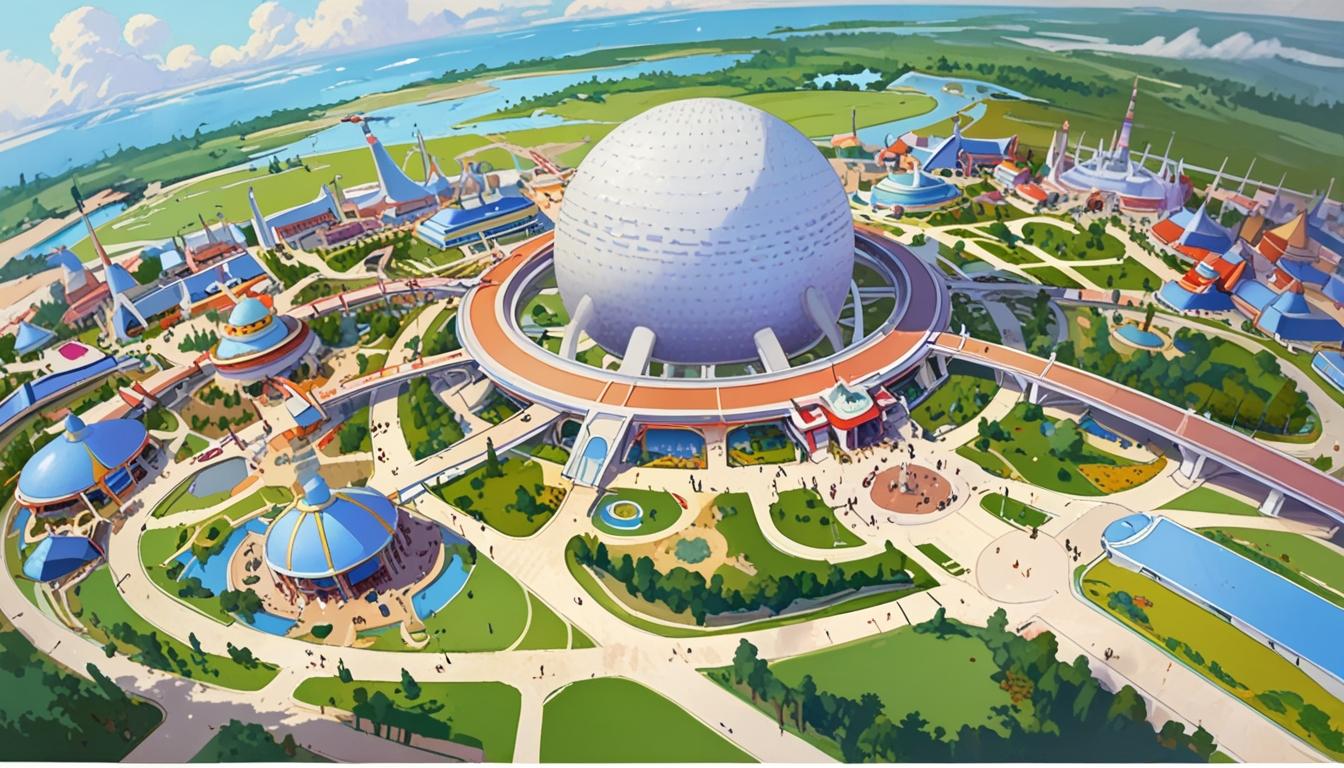In the 1980s, an ambitious plan to create a major theme park known as WonderWorld was proposed in Corby, Northamptonshire, aiming to establish a British counterpart to the successful US Disney parks. The blueprint was backed by £346 million in investment and included designs by Monty Python’s Terry Gilliam. Despite initial enthusiasm and detailed plans, the project ultimately did not come to fruition.
The theme park was intended to be built on a vast 1,000-acre site in Weldon, near what is now Priors Hall Park. According to a 1989 BBC Look East report, the plans envisioned thirteen themed villages, hotels, numerous rides, and other attractions designed to provide a world-class entertainment experience. Central to the design was a themed village featuring a large, 700-metre diameter central bowl, inspired in part by Disney's Epcot Park in Orlando, which opened in 1982. A distinctive feature of Epcot is its iconic Spaceship Earth ride situated inside a spherical structure, which influenced the WonderWorld concept.
Additional features proposed for the park included a mock safari, a 10,000-seat indoor sports stadium, a concert arena, and a family resort complex with multiple hotels. The vision was to craft a "unique resort set in beautifully landscaped surroundings" with a strong focus on participation and education, offering entertainment at the highest level. Derek Walker, one of the project's architects, spoke in 1985 of his hopes that WonderWorld would “offer the best of British design” and be both “participatory and incredibly educational,” reflecting the planners' ambitions for the site.
The park was envisaged to create substantial employment opportunities amid a backdrop of economic hardship in Corby. The town had suffered significant job losses following the closure of its steelworks in 1980, which left around 10,000 people unemployed, representing nearly one-third of the workforce. WonderWorld was poised to address this crisis by providing 2,000 construction jobs, 1,000 full-time positions once operational, and an additional 350 seasonal jobs.
Despite these promising aspects, several challenges prevented the park from progressing beyond initial stages. Rising construction costs, lengthy planning delays, and difficulties securing long-term funding stalled the project. By the late 1980s, with construction yet to begin, the Dream of WonderWorld had faded. The only material evidence at the site was a large sign bearing the park’s name and a small wooden cabin.
The project hoped for a swift completion, planning a 39-month construction schedule with an opening planned for the summer of 1992. It anticipated welcoming four million visitors annually and providing parking spaces for 7,000 vehicles.
Over time, the land originally earmarked for WonderWorld transformed with housing developments. More than 1,000 homes have since been built at Priors Hall Park, with plans underway to expand with an additional 5,000 houses.
Interest in large-scale theme park developments in the UK continues, as recent plans have been unveiled for a new Universal theme park in Bedford, announced earlier this year. This marks a resurgence in ambitious entertainment projects aiming to boost local economies and tourism, recalling the aspirations of pioneering proposals like WonderWorld from decades past. The Independent is reporting on this historical context as the story of British theme park ambitions evolves.
Source: Noah Wire Services
